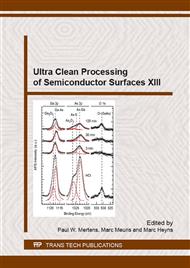p.157
p.163
p.168
p.172
p.176
p.182
p.186
p.195
p.201
Liquid Cell Platform to Directly Visualize Bottom-Up Assembly and Top-Down Etch Processes inside TEM
Abstract:
The assembly process of nanostructures from nanoparticles in solution is fundamental for bottom-up fabrication of functional materials and devices. In a similar way, bottom-down fabrication approach requires etching of materials. We take advantages of emerging in-situ liquid cell transmission electron microscopy (TEM) technique and explored several liquid processes such as: (1) nanoparticle-nanoparticle interaction in thin fluid layer, (2) wet etching of nanostructures and (3) pinning and de-pinning of nanodroplets at solid surface. Our approach is to directly visualize nanoscale liquid process, which is important for development of new nanofabrication processes for the design of next generation nanoscale devices. Our finding of nanodroplet pinning has important implications on surface cleaning at the nanoscale.
Info:
Periodical:
Pages:
176-181
Citation:
Online since:
September 2016
Authors:
Price:
Сopyright:
© 2016 Trans Tech Publications Ltd. All Rights Reserved
Share:
Citation:


